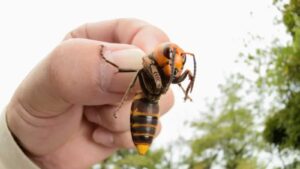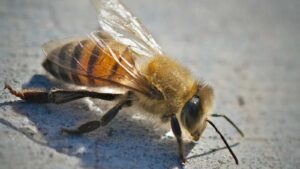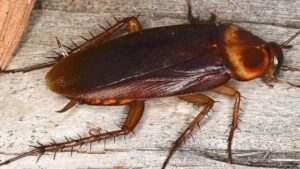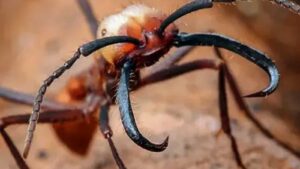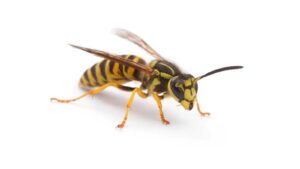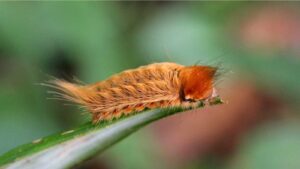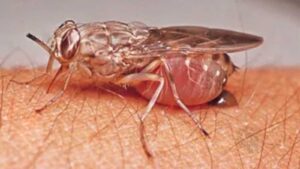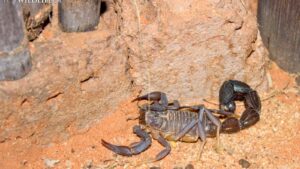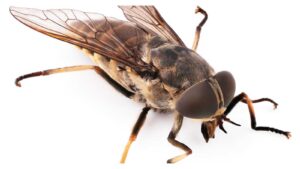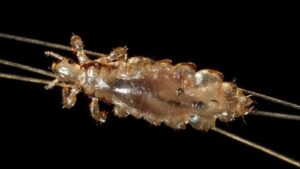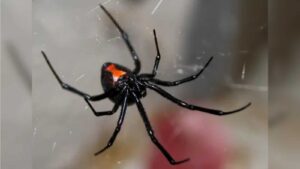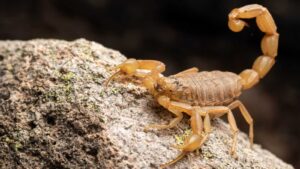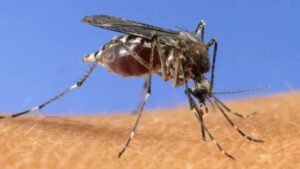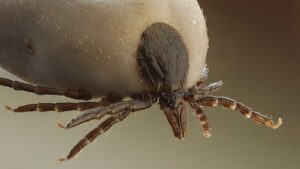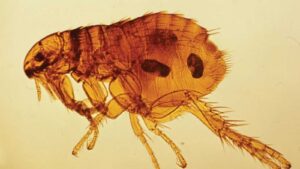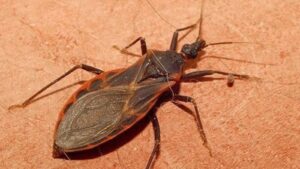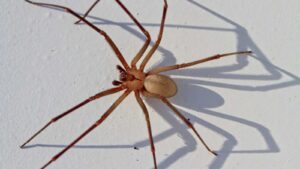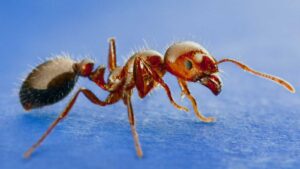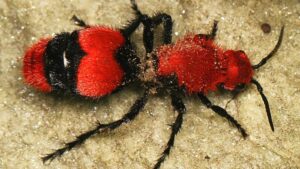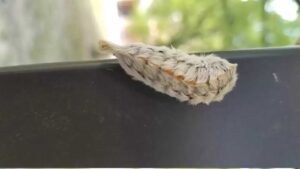Most dangerous insects you must run away from
Summary
Top 20 most dangerous insects you must run away from. Deadliest insects are not necessarily the largest or the scariest-looking. There are many insects in our world that deserve to be feared and avoided, despite their size and appearance! Without […]
Top 20 most dangerous insects you must run away from. Deadliest insects are not necessarily the largest or the scariest-looking. There are many insects in our world that deserve to be feared and avoided, despite their size and appearance! Without proper treatment, some insect bites may even result in death. Even some of the deadliest diseases are transmitted by these insects. To help you identify any potential dangers, we’ve compiled a compendium of the top 20 most dangerous insects alive today. And if you see this, you must run away and ask for help.
Video: Most dangerous insects you must run away from
Giant Japanese Hornets
These guys are not to be taken lightly; they are one of the most dangerous bugs. Measuring 2 to 3 inches, this hornet carries a toxin that often leads to paralysis, kidney failure, and death, oftentimes a slow one, in those that are bitten. Much like mosquitoes, this Asian pest is attracted to humans who sweat, drink alcohol, smell sweet, or are running. So when vacationing in Asia, consider this when you are deciding on activities.
Video: Most dangerous insects you must run away from
Killer Bees
How can these cute little fuzzy, pollen-collecting, and honey-making insects be a danger? These most dangerous insects of all time are very territorial and will protect their queen with their lives. With the introduction of the Africanized bee, this trait has been cross-bred into the American honey bee, making them more aggressive and unpredictable. When an attack is imminent, it comes with an army of angry bees that give signals to all that the danger must be eliminated. When handling beehives, it is best to enlist the help of a professional. They can help you remove and relocate the hive to a more safe location.
Cockroaches
These worst insects that are known to be able to live through a nuclear attack—no kidding, they can survive for months without food or water. They can carry many harmful diseases for humans, and you should be careful not to touch or let it crawl on you. Cockroach droppings contain proteins that trigger allergies and asthma attacks in some people. They may even cause children to develop asthma. These proteins can linger in the home even longer than the feces themselves, remaining dangerous for years after the roaches themselves have gone.
Army Ants
Now we’re getting serious. Before you laugh at us, know that army ants are really the most dangerous insects in the world. Unlike other ant types, these are predators that actively seek prey and food; they build small colonies everywhere they go and prey on insects and other small species. Fun fact: The army ants can actually consume half a million animals each day if the entire colony goes on the hunt. Army ant hunting groups, called swarm raids or column raids, can be 200,000–20 million ants strong, fanning out into a 15–110 yard-wide swath of voracious killers. These raids aren’t random though; they fall into a carefully organized cycle based on the hatching and growth cycle of the young.
Yellow Jackets
You do not want to piss off this bug. While you might think it’s just a little bee, know that the German Yellow Jacket found in North America is an aggressive insect that can sting you multiple times and cause a lot of pain. They will even go to mark their provokers and pursue them to attack. Watch out for this one. Indeed, the most dangerous insects around the world.
Puss caterpillar
The most deadly insect is living evidence that you can’t judge a book by its cover. This insect looks like it’s all warm and fuzzy, but once you get stung, your entire perception will change. Although getting stung rarely warrants medical attention, increasing pain throughout the body is a warning sign that it may be. Not all physicians are capable of identifying the bite and diagnosing patients with something totally different, sometimes leading to accidental deaths.
Tse Tse fly
This most dangerous bug around the world belongs to the family of the house fly. This insect carries a parasite that travels through the flesh if bitten, leading to death. This death is referred to as the sleeping sickness resulting in certain body parts shutting down and the person becoming comatose. The disease is easy to treat, but because of the expensive medication, several go untreated and end up dying.
Thick Tail Scorpion
Just by its name, you already know not to mess with it, right? Not typically a bug, but most dangerous animal kind for sure. One of the most dangerous types of scorpions, usually found in South Africa in desserts and best recognized because of their thick tails that can spit venom. If you are hit with a hit, it will cause extreme pain, paralysis, and even death, so beware of this bug at all costs.
Human Bot Flies
These most poisonous insects are usually transmitted via mosquitoes or ticks. When a mosquito carrying the larvae of the human bat flies with it and lands on a human skin, it will just leave it there before flying away. After a few days, the larvae will grow into an infection under your skin if not treated immediately. The human flies usually carry with them life-threatening parasites with their larvae; don’t let them on you.
The Lice
While your children play outside this summer, make sure you check them for head lice afterward. Head lice are found worldwide, but in the United States, there are an estimated 6 million to 12 million infestations each year among children 3 to 11 years of age. While the bugs themselves aren’t dangerous, they are hard to get rid of, can spread easily, and can cause secondary infections brought on by itching.
Black widow spiders
Black widow spiders, which are found in every U.S. state except Alaska, are about the size of a half-dollar and typically have a red hourglass shape on their backs. While the black widow spider usually only bites if it feels threatened, its bites are painful and can even require a trip to the hospital. The most painful and deadliest insects can be found around gardening tools or gloves, sheds, corners of garages, and other dark, undisturbed areas.
Read More: Biggest catches of all time will blow your mind
Arizona Bark Scorpions
The Arizona Bark Scorpion is the most deadly insect in North America. You can find this fellow in Southwest America and Southern Utah. If you get bitten by this scorpion, you will vomit and experience extreme pain and numbness. Although dying from its bite is unlikely, elderly and young children are more at risk. In the wild, they lie under rocks, crevices, and trees, but they are also easy to find indoors, especially in sinks, tubs, drawers, or dark cabinets. This is the only species of scorpion in Arizona that is truly considered life-threatening.
The Mosquitoes
Despite their size, they carry life-threatening diseases, and measures should be taken to protect against large infestations. This tiny pest is responsible for much misery and death. Mosquito bites result in the deaths of more than 1 million people every year. Nowhere in the world is safe from mosquitoes; they are found everywhere, even in Alaska! There are areas in the U.S. that are prime real estate for, but the truth is warm/hot weather and any puddle of stagnant water is a breeding ground.
The Ticks
Ticks can be very tiny, and some can also carry Lyme disease. Prevalent throughout North America, ticks can attach themselves to exposed skin. After time spent outdoors, it’s important to do a full body check for ticks and to remove any ticks immediately. Removal of a Lyme disease-carrying deer tick within 36 hours can reduce your risk of getting the disease.
The Fleas
A flea’s life is spent searching for a place to call home, where they can enjoy a meal of sweet, warm blood. These little parasites can be found on reptiles, mammals, domestic animals, and humans! Over the centuries, this little pest has caused devastation. The Black Plague and Typhus are a couple of flea-borne diseases that have been devastating to communities.
Kissing bugs
The kissing bug—how sweet—a bug that gives kisses. However, the name is deceiving. It is actually a blood-sucking parasite that is attracted to its feeding sites by breath. So if you breathe through your mouth, you are a target. This kisser leaves behind a gift after he is done feasting. Chagas, which can be a life-threatening illness. An estimated 20 to 30 percent of people with Chagas disease experience symptoms 10 to 25 years later. The symptoms are severe and can be life-threatening.
Brown Recluse Spider
Native to the Midwestern and Southern United States, Brown Recluse Spiders can be deadly to children under the age of 7. Displaying a violin-like shape on their back, these spiders can range in color from brownish-tan to yellow-tan. Most deadly insects only bite when provoked. Infrequently, bites in the early stages produce systemic reactions accompanied by fever, chills, dizziness, rash, or vomiting. Severe reactions to the venom are more common in children, the elderly, and patients in poor health. Persons bitten by a brown recluse spider should apply ice, elevate the affected area, and seek medical attention immediately.
Fire Ants
These deadliest insects of all time build their colonies on the ground in soil and sand, very close to your feet! If you’re not careful, your feet can be covered in record time, and the biting begins before you ever have a chance to get away. Fire ants are very protective of their colonies, and so intruders are given no mercy. Not only are these bites painful, but they can cause very severe reactions, especially in those with fire ant allergies.
The Cow Killer
The Cow Killer is a solitary wasp, more likely to be seen alone than in nests with hundreds of others. This wasp species is parasitic to bumble bees. When it’s just a few, it’s not lethal. But if the cow steps on any, a chemical signal in the venom gland, an alarm pheromone, is released that mobilizes the colony for group attack. There’s venom coming from the saliva, and then there’s a true venom gland. At that point, a small child or a person with a suppressed immune system could be at risk.
Read More: 30 Terrifying Animals You are so Glad are Extinct
Asp Caterpillar
It has numerous common names, including southern flannel moth for its adult form, puss caterpillar, asp, Italian asp, woolly slug, and most commonly trump caterpillar. As you may have noticed, it looks like the hair of someone other than Donald Trump. According to the scientific literature, contact with the fine hairs is an awful experience. Intense, throbbing pain develops immediately or within five minutes of contact with the caterpillar. Some patients liken the amount of pain to breaking bones, kidney stones, or being hit with a hammer or baseball bat. And pain isn’t the only symptom. Headaches, nausea, vomiting, and intense abdominal distress are common symptoms for the victim.
Which one do you find the most dangerous and terrifying? Have you ever encountered any of them? Don’t forget to let us know in the comment section.
